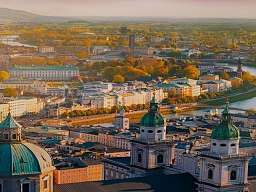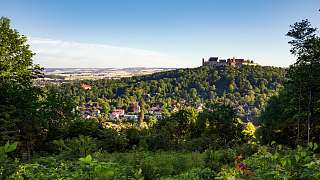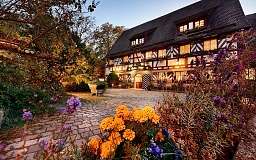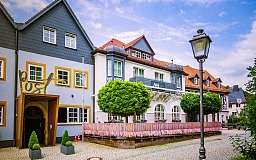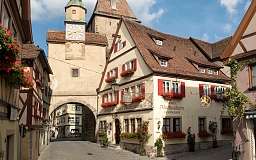Romantik Blog
Time travel on the Castle Road
Travelling through the centuries is a real possibility on the Castle Road. Covering almost 1,000 kilometres, it connects over 90 castles, palaces and ruins between Mannheim and Bayreuth, or even as far as Prague - each of them a gateway to a different era. They are reminiscent of emperors and kings, poets and thinkers, robber barons and Romanticism. But it's not just imposing walls and historic walls that fascinate: History comes to life along the route. Medieval markets, knights' banquets, open-air plays and concerts bring past times to life. Museums tell of the everyday lives of people in the past, from courtly splendour to dark dungeons. And for those who want to delve deeper, castle and palace hotels not only have creaking floorboards and armour on the walls, but also romantic courtyards, fine restaurants and an atmosphere that is otherwise only known from films.
Discover the route on the map.
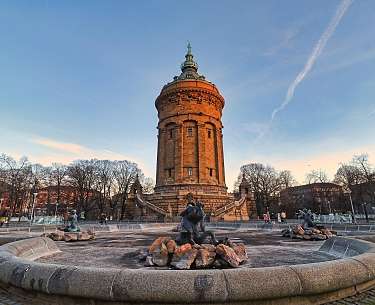
Mannheim. A lively start.
Mannheim welcomes you with an interesting mix of baroque architecture and urban flair. Mannheim Palace, one of the largest baroque palaces in Europe, and the water tower in the city centre tell of history and power. Life pulsates between the wide avenues: People out and about, street music, the unmistakable feeling that tradition and modernity go hand in hand here. A successful start to a journey full of discoveries. Then it's off to romantic Heidelberg and up to its historic castle ruins overlooking the Neckar.
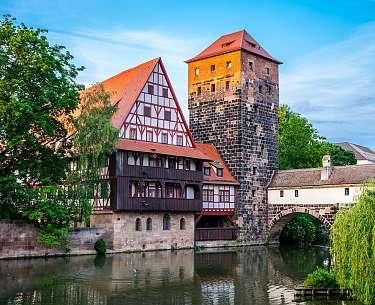
Nuremberg. History that remains tangible.
In Nuremberg, medieval buildings meet the hustle and bustle of a modern city. The Imperial Castle rises proudly above the old town and casts long shadows over cobblestones that kings and merchants have felt under their soles. But that is only part of the story. The city is alive in its alleyways, cafés, cosy wine taverns and markets, where the aroma of roasted coffee beans and spices wafts through the air. Or at the world-famous Nuremberg Christmas Market. The atmosphere is diverse, surprising and genuine - a place where history is not just told, but experienced.
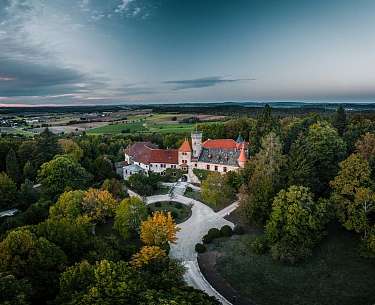
A detour to Ahorn & Wirsberg.
Densely wooded valleys, hills, quiet sources of energy and the clear, fresh air. In Ahorn and Wirsberg, you can immerse yourself in the unspoilt nature of the Franconian Forest. The gentle murmur of a stream mingles with the song of birds, while the moss-covered ground gives way beneath your feet. The historic castles stand proudly, their stone walls telling of times long past. Here, the silence is a blessing that touches the heart and refreshes the senses. For all those who want to read between the lines of the Castle Road. And if you stay overnight at the Romantik® Hotel Schloss Hohenstein in Ahorn, you will become a castle resident yourself.
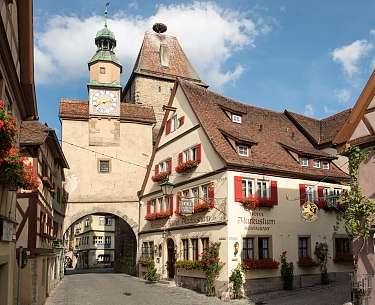
Rothenburg ob der Tauber. A journey back in time to the Middle Ages.
In Rothenburg ob der Tauber, time beats to a different beat. As the sun sinks behind the red roofs, the half-timbered houses turn a warm golden colour and the smell of freshly baked bread and sweet pastries wafts through the alleyways. The soft light of the lanterns casts dancing shadows on the historic walls. Here you can feel how stories of knights, merchants and ladies-in-waiting come to life and transport yourself to the centre of a living fairy tale. Stay overnight in the historic Romantik® Hotel Markusturm right next to Rothenburg's famous landmark - the Plönlein.
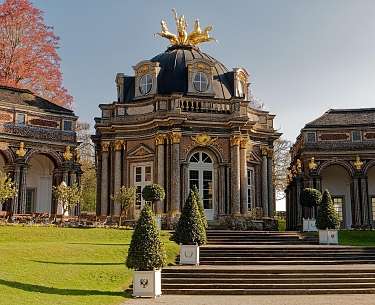
Bayreuth. Finale with fanfares.
Baroque meets stage magic: when you reach Bayreuth at the end of the Burgenstraße, you have not only left many walls and towers behind you, but also entered a city where history and music share the stage. The UNESCO award-winning Margravial Opera House is a baroque synthesis of the arts. Those who prefer to stroll outside will find what they are looking for in the extensive Hofgarten, a green setting of reflecting ponds, avenues and tranquillity. And then of course: Wagner. In Bayreuth, there is no getting round the composer. The festival city lives from his aura, and not just in summer. Whether you love the music or meet it with a sceptical frown, the Festspielhaus high above the city is impressive in any case. Bayreuth is a fine, almost quiet conclusion to this journey. And at the same time: an echo. Because once you have immersed yourself in the stories of the Castle Road, you will take them with you.
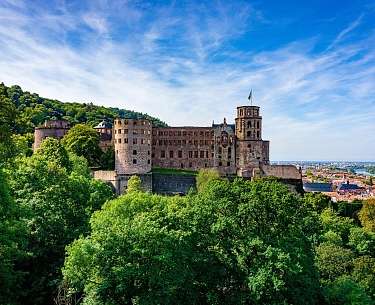
Highlights on the route.
From the imposing baroque palace in Mannheim to the romantic ruins overlooking the Neckar in Heidelberg. In Rothenburg ob der Tauber, the half-timbered houses and town walls take you straight back to the Middle Ages. Nuremberg delights with its imperial castle, the Dürer House and a lively old town. Further east, Weikersheim Palace is a surprising baroque gem with a magnificent garden. Bamberg, a UNESCO World Heritage Site and beer city, combines history with pleasure and in Bayreuth, the Margravial Opera House crowns the route with festive splendour.
Discover hotels on the Castle Road on the map.
Germany
FAQ Frequently asked Questions and Answers
The Castle Road is one of the oldest and most famous holiday routes in Germany. It connects over 90 castles, palaces and historic towns along around 1,200 kilometres - from Mannheim on the Rhine to Bayreuth (or to Prague on the extended route). A journey through centuries, embedded in varied landscapes.
The route starts in Mannheim (Baden-Württemberg) and ends in Bayreuth (Franconia). Alternatively, the route can be officially extended to Prague.
Depending on your pace and interests, a travel time of 5 to 10 days is recommended for the German route. If you plan smaller places, detours or culinary breaks, you can also plan more time - the pace is determined by your curiosity.
Yes, the route is marked with brown signposts with the words “Burgenstraße”. Nevertheless, a map or GPS system is recommended - especially for side routes or spontaneous detours.
Partly. There are well-developed cycle paths, especially along the Main and Tauber rivers. However, not all sections are suitable for cycling throughout - there are differences in altitude, main roads and less developed sections.
Yes, various providers offer guided coach tours, classic car tours or cultural tours along the Castle Road. Those who prefer to travel individually will find numerous tips and accommodation along the route.
The ideal time is from May to October. This is when the castles and palaces are usually open, many events (e.g. wine festivals, medieval markets, concerts) take place and the landscape is particularly attractive.
Yes - many castles, museums and palaces charge an entrance fee. However, there are also publicly accessible facilities that can be visited free of charge. Opening times vary - it's worth checking in advance.
Post your comment
Comments
No one has commented on this page yet.
RSS feed for comments on this page RSS feed for all comments
More interesting articles
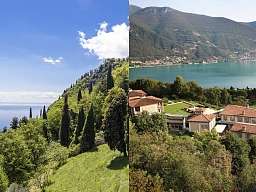
Upper Italian Lakes - Time Travel into the Originality of Northern Italy
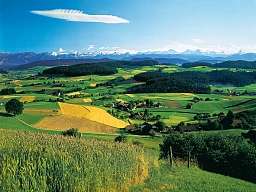
Romantik Country Hotels in Switzerland
